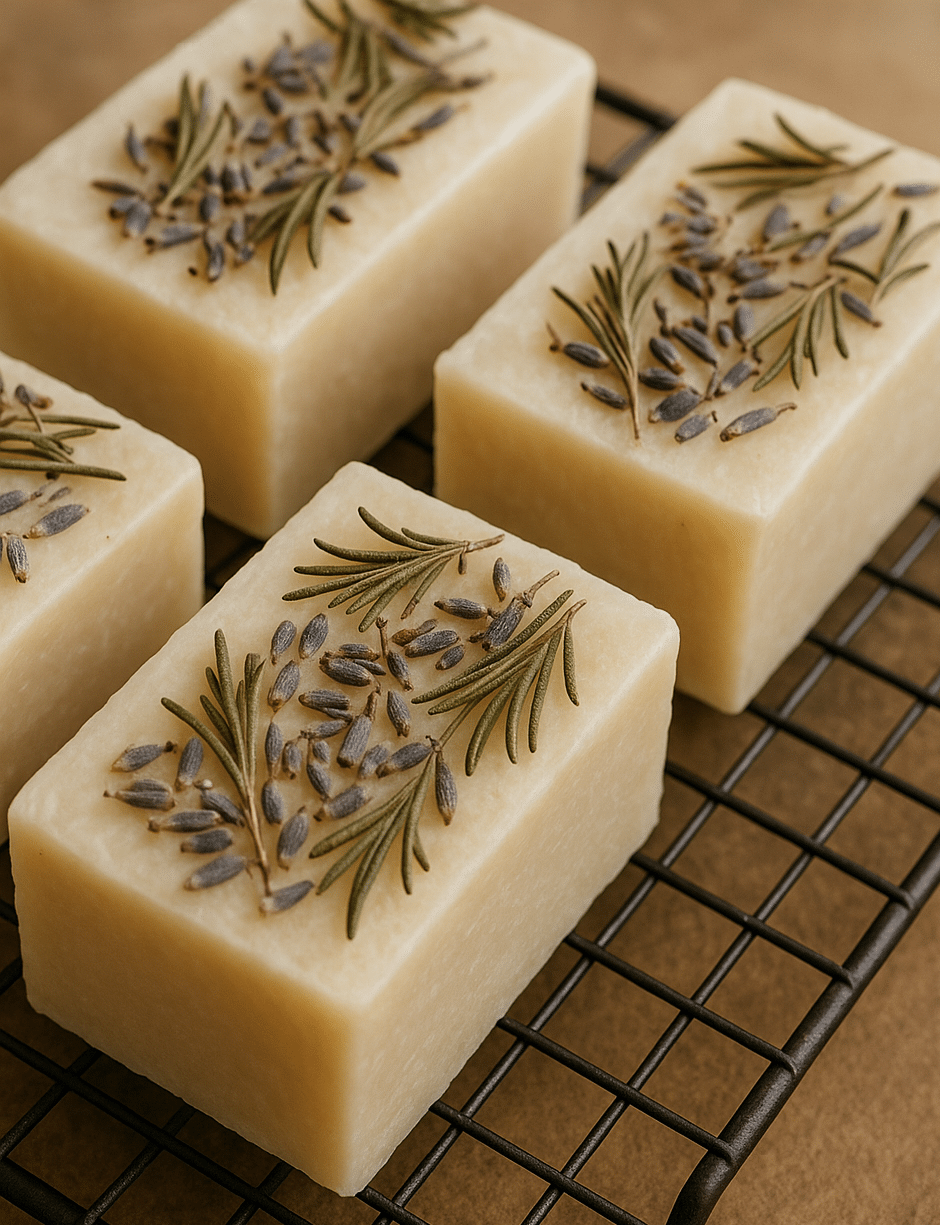How to Make Tallow Soap At Home
How to Make Tallow Soap might sound a little old-fashioned, but it is actually simple, fun, and super rewarding. This traditional soap is made from animal fat (tallow) and just a few basic ingredients.
Don’t worry—it’s not complicated at all, and the final result is gentle, long-lasting, and great for your skin.
Whether you are new to soap making or just curious, I will guide you through the whole process step by step. Let’s get started!

🐄 What Is Tallow Soap?
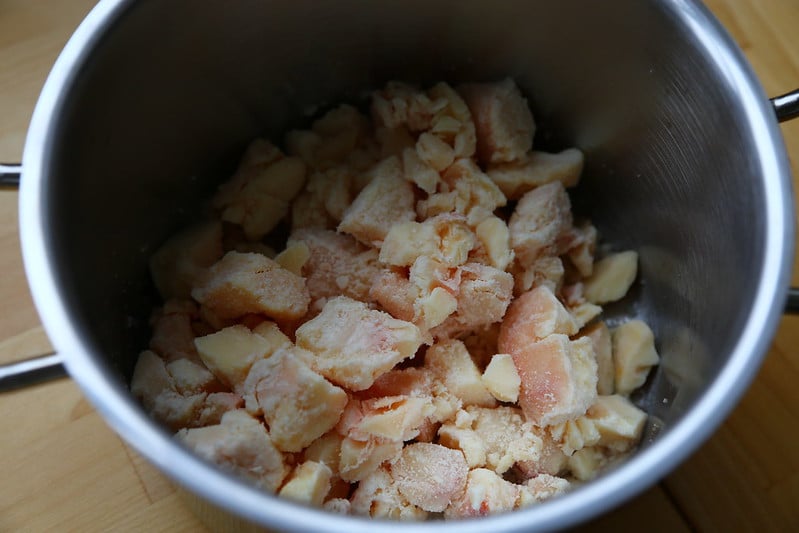
Before I jump into the how-to, let me quickly explain what tallow is (don’t worry, I will keep it super simple).
Tallow is basically beef fat that has been cleaned up and melted down. Once it’s rendered, it turns into a creamy, white fat that works amazingly in soap.
It makes bars that are firm, long-lasting, and super gentle on the skin. It’s been used for generations by grandmothers, pioneers, and even royalty (yes, really!).
🧼 Benefits of Tallow Soap
Tallow soap is one of my favorites because it offers so many great benefits. I’ve listed them below in bullet points for easy understanding.
- Very moisturizing – Great for dry skin and keeps your skin soft.
- Long-lasting bars – Don’t melt quickly in the shower, so they last a long time.
- Creamy lather – Feels smooth and luxurious when you use it.
- Gentle on skin – Perfect for sensitive or dry skin types.
- Budget-friendly – You can get beef fat cheaply or even save it from cooking.
- Natural ingredients – No harsh chemicals, just simple, traditional soap.
🛒 Ingredients
Base Ingredients:
- Tallow
- Coconut oil
- Olive oil – 4 oz (for a gentle feel)
- Distilled water – 9 oz
- Lye (sodium hydroxide) – 4.3 oz
Optional:
- A few drops of essential oils (I love lavender or peppermint)
- Dried herbs or flower petals (just for the pretty factor)
🧷 Safety First!
Okay, quick serious moment here ⚠️. When making soap, you must be careful with lye. It’s strong and can burn if you’re not cautious. Just follow these simple rules: (source)
🧤 Wear gloves and 🥽 goggles
🌬️ Work in a well-ventilated area
💧 Add lye to water—never the other way around (this is super important 🔥)
🚫 Keep kids and pets out of the kitchen
Once your soap is made and cured, there’s no lye left in the final product.
It’s just good, clean soap 🧼—pinky promise 🤞💛
🔥 Step-by-Step: How to Make Tallow Soap
Step 1: Render the Tallow (If You Don’t Have It Yet)
If you already have rendered tallow, skip this step. If not, here is what I do:
- I get some beef fat trimmings from my local butcher (they usually give it to me cheap—or even free).
- I chop it up into small pieces and toss it in a slow cooker or pot with a little bit of water.
- I let it melt down low and slow, stirring now and then.
- Once it’s melted, I strain it through cheesecloth into a clean jar
Then you will get pure tallow!
Let it cool and solidify. It turns creamy white and smells kind of neutral.
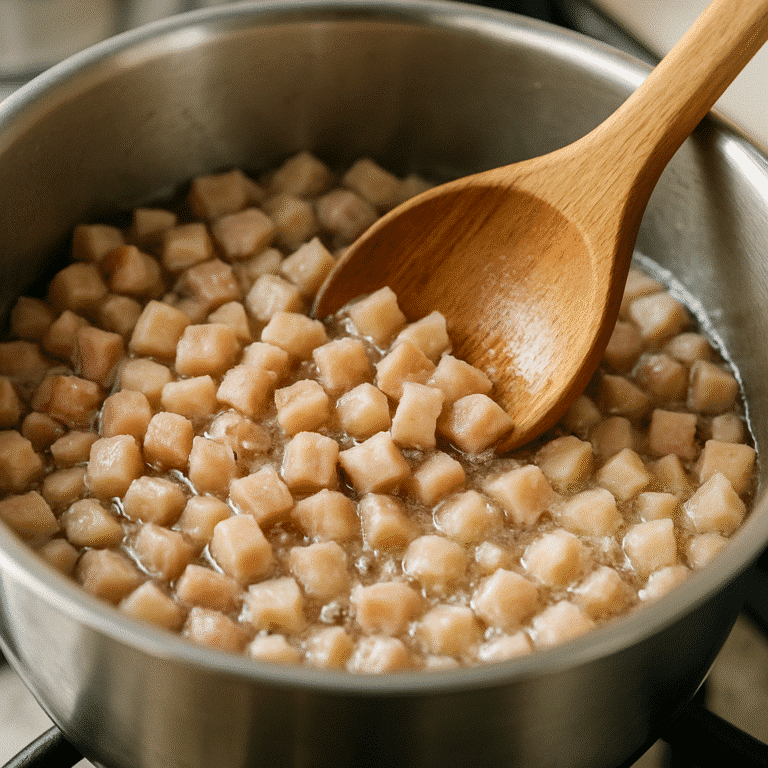
Step 2: Prepare Your Workspace
I lay down some newspaper, grab my gloves and goggles, and gather all my tools:
- A kitchen scale (for accurate measuring)
- A stainless steel pot
- A heat-safe bowl or jug for lye
- A stick blender (you can use a whisk, but it’ll take longer)
- A silicone spatula
- A soap mold (I use a loaf mold, but you can even use a lined loaf pan)
Step 3: Mix the Lye Water
Here is where you have to be careful. I take my distilled water and slowly pour in the lye while stirring.
Never pour water into lye—that’s wrong.
It gets hot fast! I let it sit to cool down a bit while I prepare the oils.
Step 4: Melt the Oils
Gently melt your tallow and coconut oil in a pot, then stir in the olive oil.
Check the temperature—I usually like it around 100–110°F, same with the lye water. If they are within 10 degrees of each other, we are good to go.
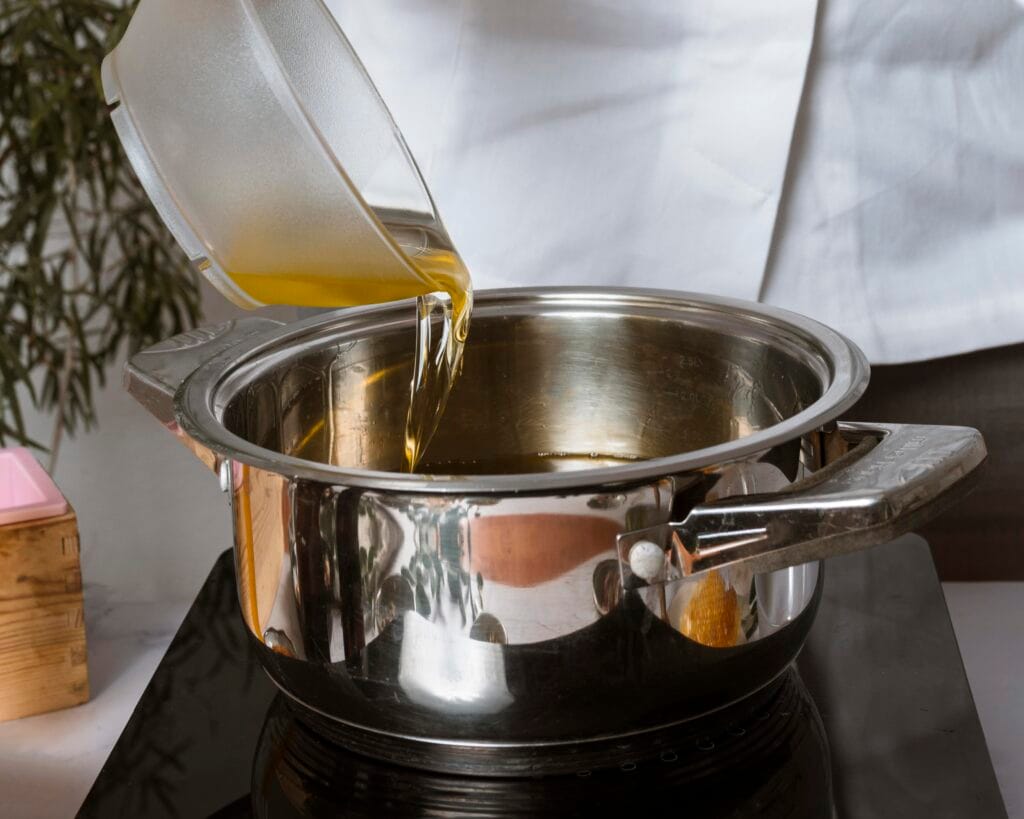
Step 5: Combine and Blend
Pour the lye water into the melted oils and grab the stick blender. Blend in short bursts, stopping to stir.
After a minute or two, the mixture thickens to what is called “trace”—basically, it looks like pudding.
You will know it when you see it. If you pull a spatula across the mix and see a line that stays for a second, your soap is ready.
This is where you can add Optional Ingredients, as I mentioned before, like Dried herbs or flower petals, essential oils, or anything else you feel like adding.
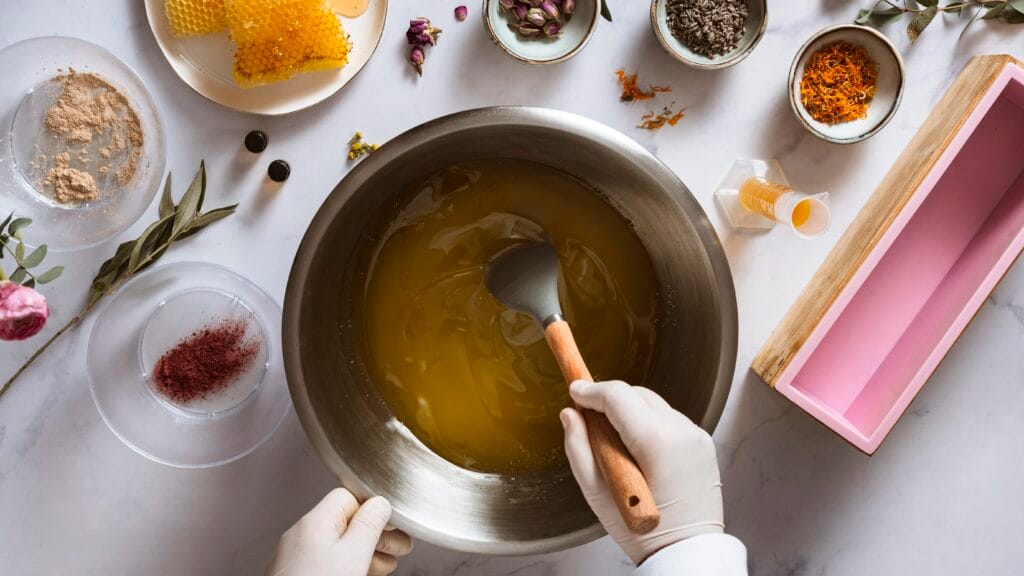
Step 6: Pour Into Mold
Scrape every last bit of that beautiful creamy mixture into the mold, smooth the top, and tap it on the counter to get rid of air bubbles.
Then cover it with a towel and let it sit for 24–48 hours.
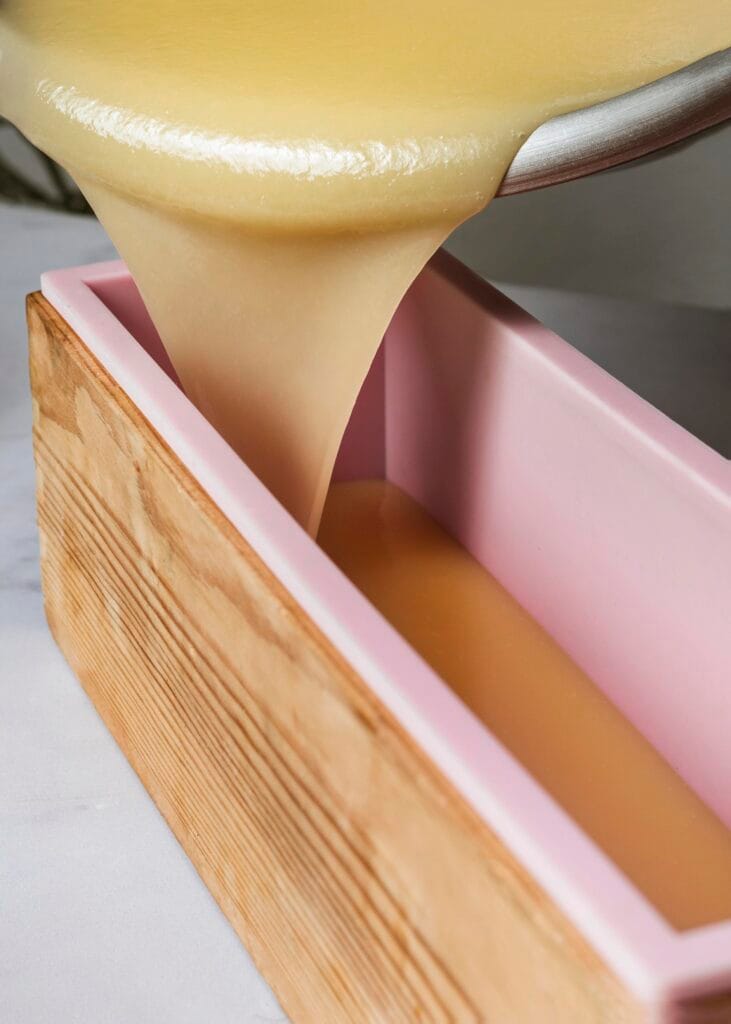
Step 7: Cut and Cure
After a day or two, pop it out and cut it into bars. This is so satisfying—they smell amazing and feel smooth already.
But here is the most important part of soap making, which is … waiting, also known as curing. I let the bars cure for about 4 to 6 weeks. This helps them dry out, harden, and get milder.
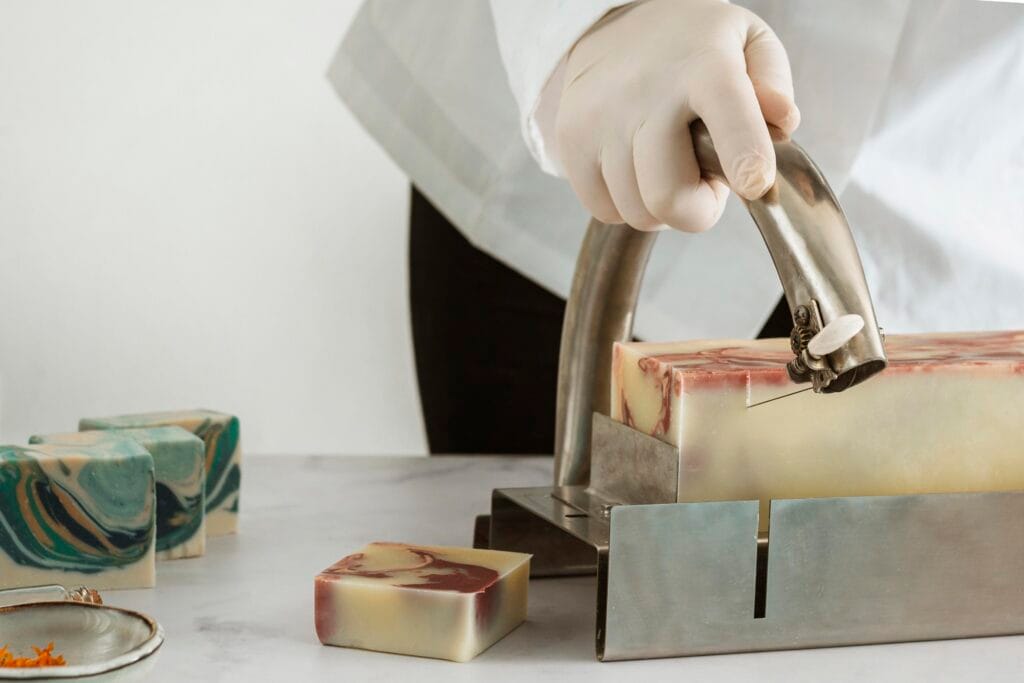
🧼 Final Thoughts & Tips
If you are just starting out, don’t overthink it. My first batch wasn’t perfect, but it worked—and every batch since has taught me something new.
Some tips from my own mess-ups:
- Don’t rush to trace. If you blend too long, it thickens fast and is hard to pour.
- Use distilled water—tap water can mess with the soap.
- Don’t add too much fragrance. A little goes a long way.
- If you are not sure your tallow is clean, render it twice. It makes a big difference.
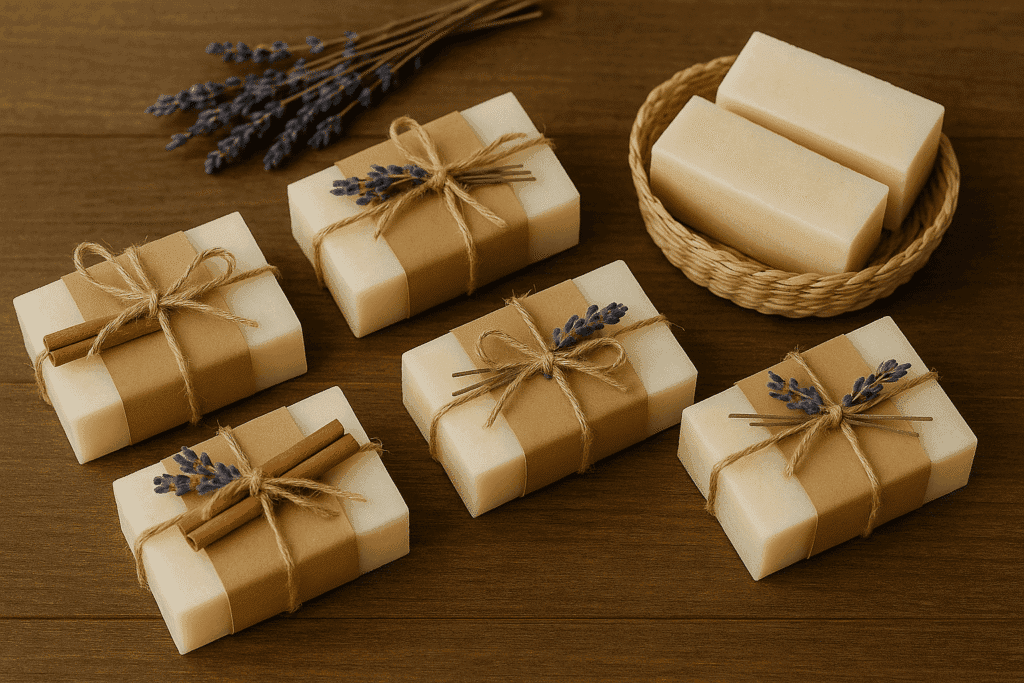
Storing Your Tallow Soap
In soap making, storing your soap the right way is important because it helps keep it fresh and long-lasting.
I like to keep mine in a cool, dry spot—away from sunlight and moisture. You can stack the bars in a cardboard box or wrap them in paper if you’re planning to gift them.
Just make sure they can still breathe a bit since airtight containers aren’t ideal. Trust me, when stored properly, your soap only gets better with time!
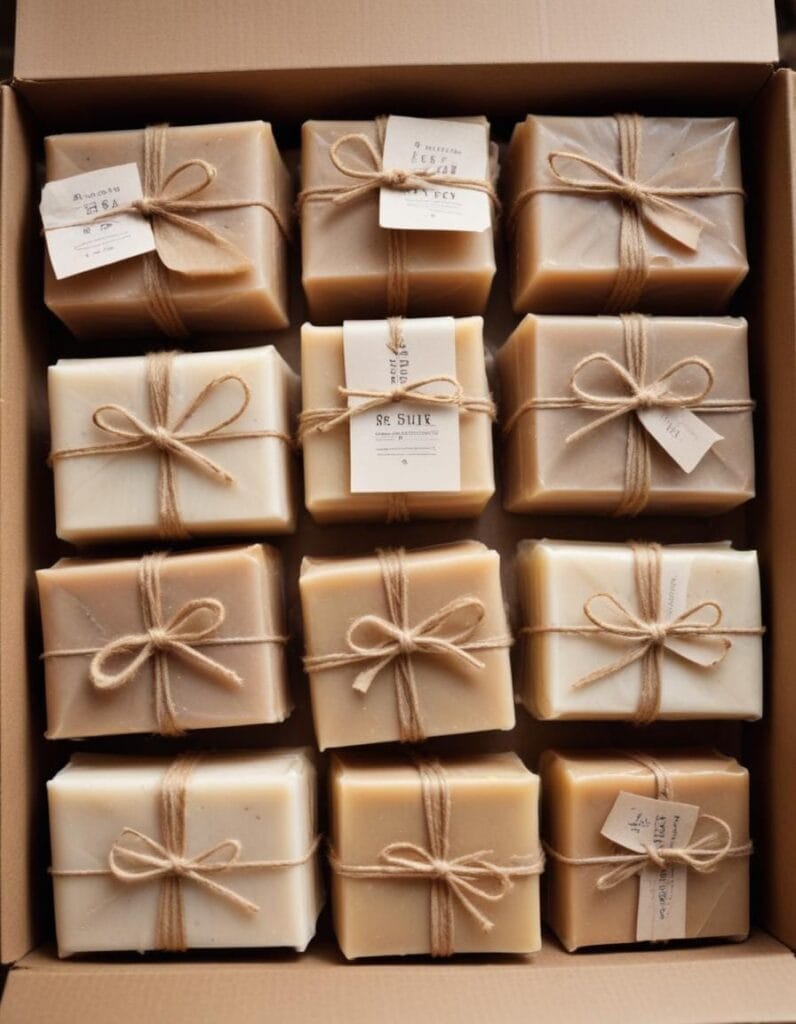
🌿 Tips for Customizing Your Tallow Soap
If you want to make your tallow soap extra special, try adding a few drops of your favorite essential oils—lavender 🌸, peppermint 🌿, or even orange 🍊 are lovely choices.
You can also mix in natural colorants like turmeric ✨, cocoa powder 🍫, or clays 🪨 to give your soap a beautiful look.
If you want some texture, toss in dried herbs 🌼, oats 🌾, or even coffee grounds ☕. I personally love adding dried herbs—they make the soap look so pretty! 💚
🧼 Want to Try More Homemade Soap Recipes?
If you liked this tallow soap recipe, don’t miss my liquid tallow soap tutorial—I’ve explained it in a super simple way 📝.
You might also enjoy my:
FAQ
1. Can I use any kind of tallow to make soap?
Yes, you can! Most people use beef tallow, but lamb or deer tallow works too. Just make sure it’s clean and fully melted down.
2. Is tallow soap good for sensitive skin?
Yes, it’s very gentle. Tallow has natural fats that help keep your skin soft and healthy.
3. Will the soap smell like meat?
No! If the tallow is cleaned and made the right way, it won’t smell like meat. You can also add essential oils for a nice scent.
4. How long does tallow soap last?
If you keep it in a cool, dry place, it can last for many months—sometimes even a year!
5. Can I make soap without tallow?
Yes, you can make vegan soap using oils like coconut, olive, or shea butter instead of tallow.
6. How is tallow soap different from store-bought soap?
Tallow soap is more natural. It doesn’t have strong chemicals, so it’s better for your skin and the environment.
